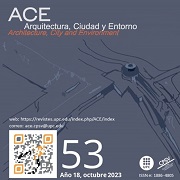From Art-Creator towards Moderator: Roles of Lithuanian Architects
Article Sidebar

Main Article Content
Egle Navickiene
The article deals with the self-reflection of Lithuanian architects on their professional roles and their transformations since the mid-20th century, encompassing the Soviet system until 1990 and the neoliberal environment afterward. The role of an architect is defined as a value system-based professional’s motives, aspirations, and modes of praxis. The identification of the roles is based on semi-structured in-depth interviews conducted in 2015-2021 with 33 prominent Lithuanian architects who graduated from architectural studies in 1950-2009 and were/are active in practice or academia. The interviews were analysed according to the method of thematic analysis. Six professional roles of Lithuanian architects in polarised pairs were identified and characterized like the roles of ‘art-creator’ and 'craftsman', the roles of ‘leader’ and ‘service provider’, and the roles of 'moderator' and ‘businessman’. The first roles in pairs have positive emotional and evaluative connotations, while the second ones are devalued. In the personal self-determination of an architect, the roles appear not in their pure form, but in combination. The evolution of roles was determined by the modernist ideology and the transformations following the change of political regimes in 1990. While Soviet modernist architects emphasized the roles of art-creator and leader in construction, young architects critically revised these roles and focus on the role of moderator. Disclosure of professional roles explains the clashes of values and reactions in the professional ideology and practice.
Article Details
Com citar
Navickiene, Egle. “From Art-Creator towards Moderator: Roles of Lithuanian Architects”. ACE: architecture, city and environment, vol.VOL 18, no. 53, https://raco.cat/index.php/ACE/article/view/422874.